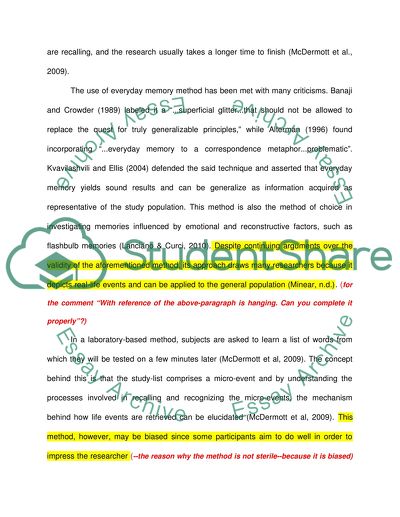Cite this document
(How Everyday And Laboratory-Based Research Works To Ensure The Latter Essay - 1, n.d.)
How Everyday And Laboratory-Based Research Works To Ensure The Latter Essay - 1. https://studentshare.org/science/1577233-the-relationship-between-everyday-and-laboratory-based-research-works-to-ensure-the-latter-is-not-sterile-discuss-with-reference-to-at-least-one-area-of-memory-research
How Everyday And Laboratory-Based Research Works To Ensure The Latter Essay - 1. https://studentshare.org/science/1577233-the-relationship-between-everyday-and-laboratory-based-research-works-to-ensure-the-latter-is-not-sterile-discuss-with-reference-to-at-least-one-area-of-memory-research
(How Everyday And Laboratory-Based Research Works To Ensure The Latter Essay - 1)
How Everyday And Laboratory-Based Research Works To Ensure The Latter Essay - 1. https://studentshare.org/science/1577233-the-relationship-between-everyday-and-laboratory-based-research-works-to-ensure-the-latter-is-not-sterile-discuss-with-reference-to-at-least-one-area-of-memory-research.
How Everyday And Laboratory-Based Research Works To Ensure The Latter Essay - 1. https://studentshare.org/science/1577233-the-relationship-between-everyday-and-laboratory-based-research-works-to-ensure-the-latter-is-not-sterile-discuss-with-reference-to-at-least-one-area-of-memory-research.
“How Everyday And Laboratory-Based Research Works To Ensure The Latter Essay - 1”. https://studentshare.org/science/1577233-the-relationship-between-everyday-and-laboratory-based-research-works-to-ensure-the-latter-is-not-sterile-discuss-with-reference-to-at-least-one-area-of-memory-research.


